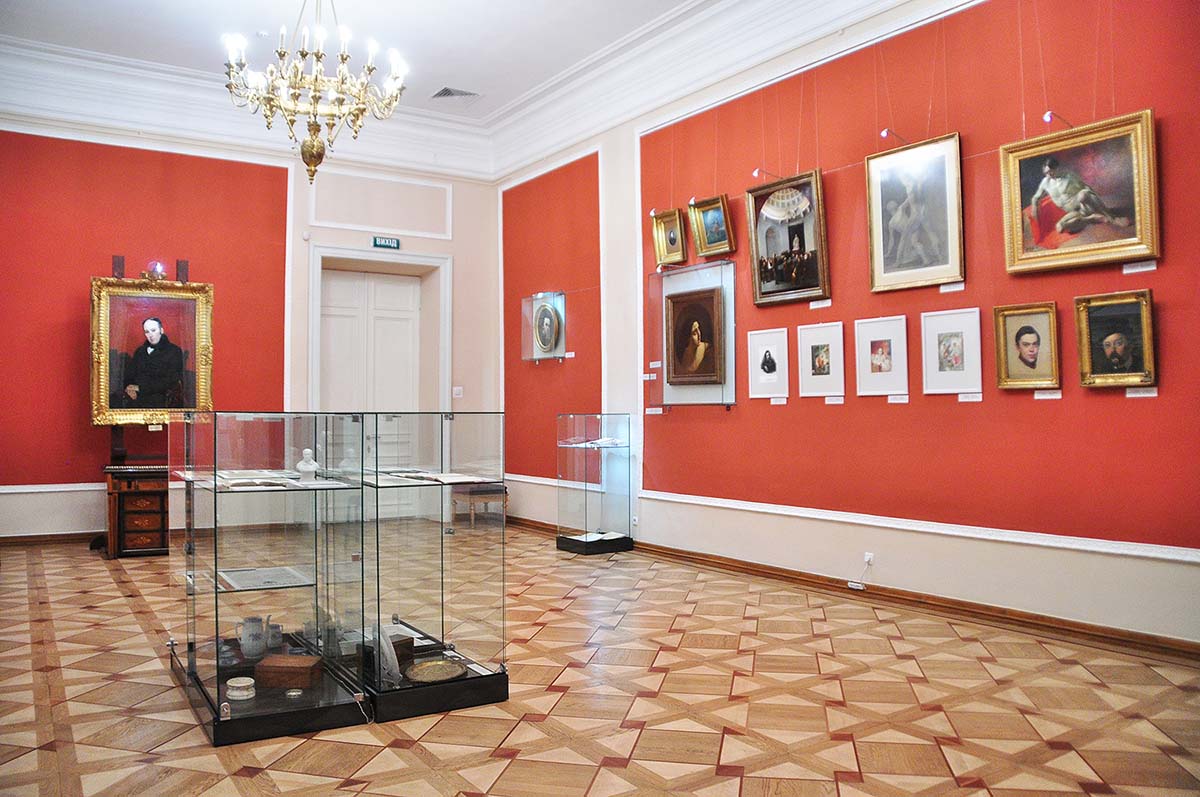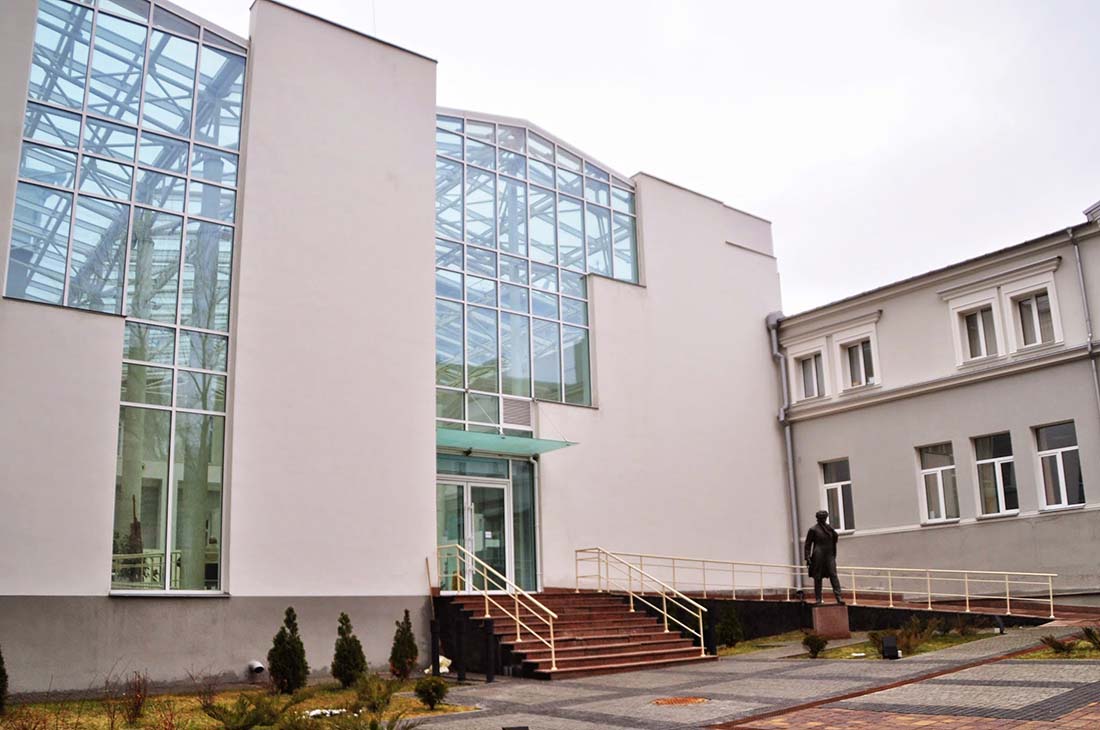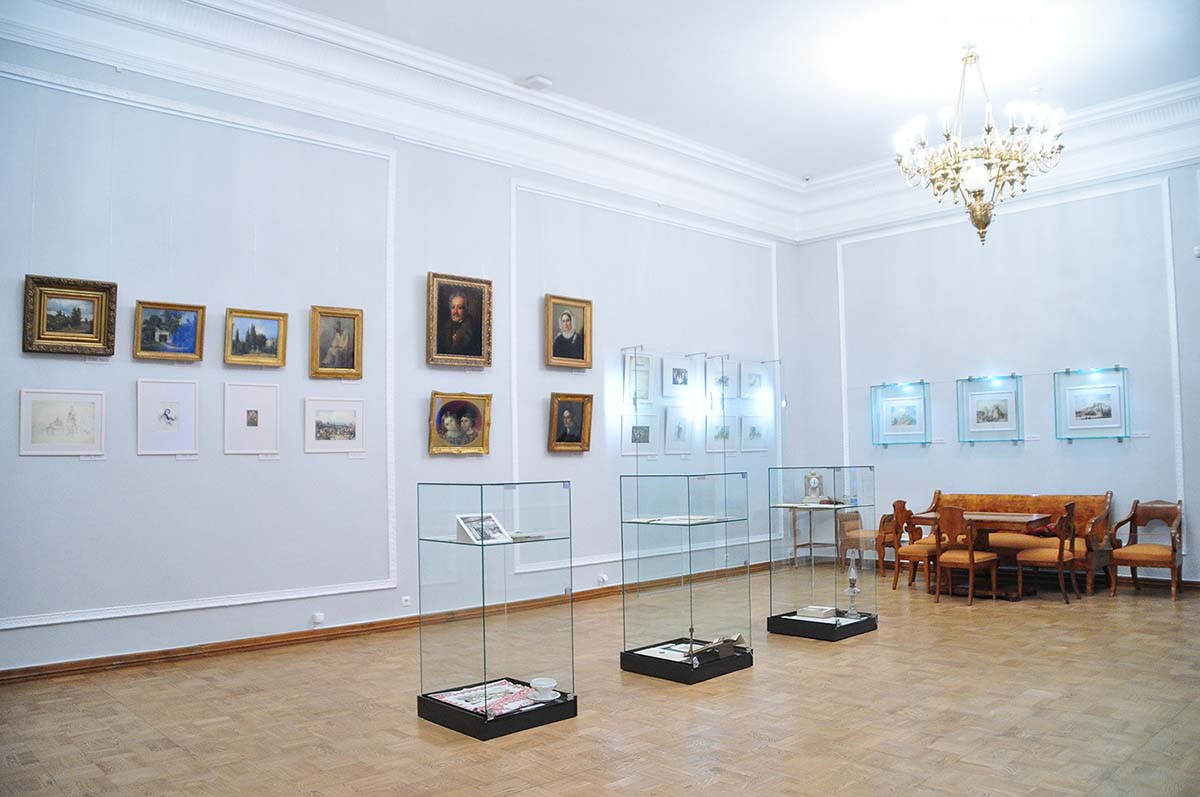The history of the collection began immediately after the death of Taras Shevchenko. As is known, he died at the St. Petersburg Academy of Arts, in a small workshop that served the artist both as a home and as a workplace. All the things that were in that workshop became the basis for the future collection. The artist Grigory Chestakhovsky, who in the last years of Shevchenko’s life was a particularly close friend to him, compiled a description of works of art, work supplies and other things that were in the studio at that time, and kept them for a long time. Soon Chestakhovsky handed over these treasures to the Chernigov collector and philanthropist Vasily Vasilyevich Tarnovsky Jr.
Tarnovsky’s collection, constantly growing, soon became the largest in Ukraine. Vasily Vasilyevich chose to transfer it to Kyiv, but the City Duma was afraid to accept such a gift: not everyone in power wanted to be among the patrons of the rebel poet. Tarnovsky transferred Tarasov’s collection to the Chernigov zemstvo, and after the October Revolution, in the 1920s, the Chernigov Historical Museum was formed, and Tarasov’s collection completely moved there and became part of its collection. Meanwhile, in Kyiv, the formation of the Academy of Sciences and the Institute of Literature began, which began to bear the name of Taras Shevchenko. It is at the institute that Kobzar’s huge collection is accumulated – his literary heritage, paintings and more. By government order, Shevchenko’s belongings were brought to Kyiv from everywhere – both from private collectors and from state museum institutions. The capital of Ukraine moves to Kharkov, and with it the Institute of Literature.
In 1939, a large exhibition opened in Kyiv on the occasion of the 125th anniversary of the birth of Taras Grigorievich, which lasted for 1.5 years. After its completion, the government, by its decision of September 20, 1940, recognized the need to create a central state museum of T. G. Shevchenko and locate it in one of the best buildings in Kiev Mariinsky Palace, but the war interfered – all the museum’s funds were evacuated to Novosibirsk.
Pavel Tychina and Nikolai Bazhan, who both worked in the government, joined forces, which resulted in the opening of the museum on June 22, 1948 at 12 Taras Shevchenko Boulevard. The building at this address, in the second half of the 19th century, belonged to the Tereshchenko family – famous philanthropists and collectors of works visual arts. Sugar magnate and philanthropist Nikolai Tereshchenko acquired it in 1875. At the request of the new owner, the house was rebuilt in the Renaissance style. After which, the building, built back in the 1840s, turned into a beautiful mansion. On April 24, 1949, the State Museum of Taras Shevchenko was officially opened and consisted of more than 4,000 exhibits.
The museum exhibition was active until 1982, when the museum was closed for restoration repairs that lasted for 7 years. All materials were transported to special premises on the territory of the Kiev Pechersk Lavra. The room was restored according to the model of Tereshchenko’s house, and now its interior has little in common with that Shevchenko Museum 1949 of the year. On March 31, 2001 the museum received national status. In 2014, on the occasion of the 200th anniversary of the birth of Taras Shevchenko, repair and restoration work was carried out in the museum, a new exhibition was prepared and opened, where, for the first time in the history of the museum, conditions were created for the permanent presentation of the works of Taras Shevchenko the artist (both painting, and graphics) in the original.
Where is the National Taras Shevchenko Museum?
Taras Shevchenko Boulevard, 12
234-25-56
Tue-Sun: 10:00-18:00, Mon: closed
last Thursday of the month – free entry
last Friday of the month – sanitary day



